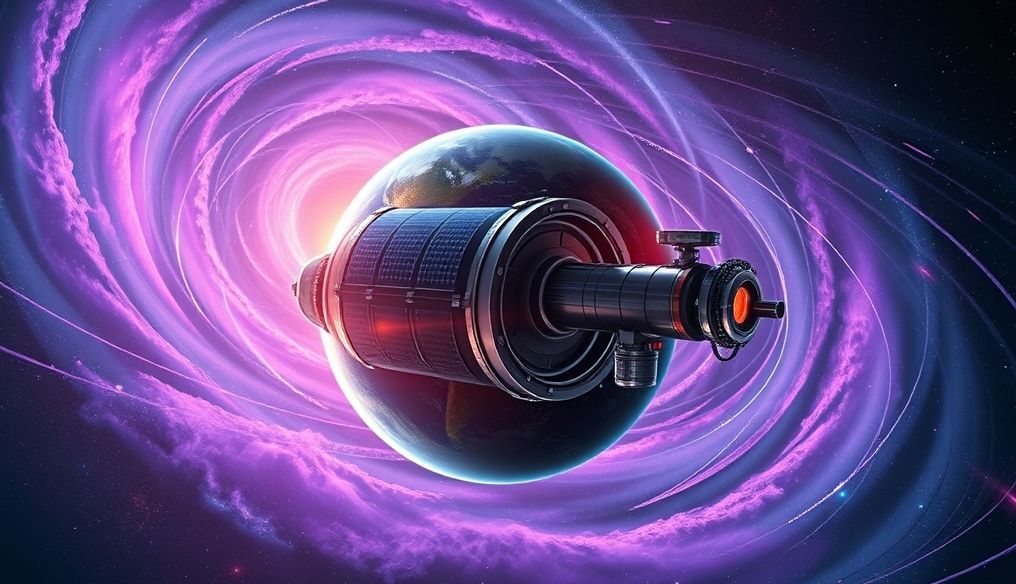What is Einstein's Theory of Relativity Simply Explained, and How Did It Change Our Understanding of the Universe?
Albert Einstein's theory of relativity is actually a set of two physical theories: special relativity, which he published in 1905, and general relativity, which he published in 1915. These two theories revolutionized our understanding of the universe, introducing new concepts about time, space, and gravity.
1. Special Relativity: Time and Space Are Not Absolute
Special relativity deals with the relationship between time and space for objects moving at a constant speed in a straight line. The two fundamental postulates of special relativity are:
- The laws of physics are the same for all observers in uniform motion. In other words, the laws of physics do not change regardless of your constant speed.
- The speed of light in a vacuum is the same for all observers, regardless of the motion of the light source. This point was revolutionary.
1.1. Consequences of Special Relativity
These two postulates have amazing consequences:
- Time dilation: The faster you move, the slower time appears to pass for you compared to a stationary observer. This is not an optical illusion; it is a real effect. For example, if you traveled in a spacecraft at a speed close to the speed of light, time would pass much slower for you than for someone who stayed on Earth.
- Length contraction: The faster you move, the shorter objects appear to be in the direction of motion.
- Mass-energy equivalence: The famous equation E=mc², which means that energy (E) equals mass (m) multiplied by the square of the speed of light (c²). This means that mass and energy are two sides of the same coin and can be converted into each other. This concept is the basis of the atomic bomb and nuclear energy.
1.2. Illustrative Example of Time Dilation
Imagine two twins, one of whom travels on a space journey at a speed close to the speed of light, while the other stays on Earth. When the traveler returns, he will be younger than the twin who stayed on Earth. This is not just science fiction; it is an effect that has been proven experimentally using high-precision atomic clocks.
2. General Relativity: Gravity Is Not a Force, But a Curvature of Spacetime
General relativity is the most accurate theory of gravity to date. Instead of considering gravity as a force that attracts objects to each other, general relativity considers gravity to be the result of the curvature of spacetime due to the presence of mass and energy.
2.1. Spacetime: The Fabric of the Universe
Imagine spacetime as a three-dimensional elastic fabric. When you put a heavy ball (like the sun) on this fabric, it causes it to curve. Other objects (like planets) move around the sun not because they are attracted to it by force, but because they follow the curved paths in spacetime around the sun.
2.2. Consequences of General Relativity
General relativity has many consequences, including:
- Bending of light: Light bends when it passes near massive objects such as stars and galaxies. This effect was proven experimentally during the solar eclipse of 1919, which confirmed the validity of Einstein's theory.
- Gravitational time dilation: Time passes slower in areas with stronger gravity. For example, time passes slower on the surface of the Earth compared to outer space.
- Black holes: Regions in spacetime with extremely strong gravity such that nothing, not even light, can escape from them.
- Gravitational waves: Ripples in spacetime that propagate at the speed of light. They were first discovered in 2015, confirming another prediction of Einstein's theory.
2.3. Illustrative Example of Gravity as a Curvature of Spacetime
Imagine a bowling ball placed on a trampoline. The ball creates a hole, and if you roll a smaller ball around the hole, it will orbit around the bowling ball. This is similar to how planets orbit the sun, not because of a direct attractive force, but because of the curvature of spacetime.
3. Practical Applications of the Theory of Relativity
Although relativity seems like an abstract theory, it has important practical applications in our daily lives:
- Global Positioning System (GPS): GPS relies on satellites orbiting the Earth. GPS must take into account the effects of special and general relativity on the atomic clocks on the satellites, otherwise the positioning system would be inaccurate by a few kilometers per day.
- Medical Imaging: Some medical imaging techniques, such as magnetic resonance imaging (MRI), use concepts from relativity to improve the accuracy of images.
- Nuclear Energy: Nuclear energy is based on the relationship between mass and energy (E=mc²), which was discovered by Einstein.
4. Why is Relativity Important?
The theory of relativity is important for several reasons:
- Changed our understanding of the universe: Relativity introduced new concepts about time, space, and gravity, leading to a deeper understanding of the universe.
- Led to new discoveries: Relativity contributed to the discovery of black holes and gravitational waves, and opened new horizons in astronomy and physics.
- Has practical applications: Relativity is used in many modern technologies, such as GPS, medical imaging, and nuclear energy.
5. Relativity and Classical Physics: Where Do They Differ?
Before Einstein, classical physics (developed by Newton) was dominant. Classical physics assumes that time and space are absolute, and that gravity is a force that attracts objects to each other. Relativity, on the other hand, assumes that time and space are relative, and that gravity is the result of the curvature of spacetime.
Classical physics is still accurate in many cases, especially when we deal with objects moving at a slow speed compared to the speed of light. However, when we deal with objects moving at speeds close to the speed of light, or with objects with strong gravity, relativity is the more accurate theory.
6. Challenges of Relativity and the Future of Physics
Despite its great success, relativity still faces some challenges:
- Reconciling relativity and quantum mechanics: Relativity and quantum mechanics are the most successful theories in physics, but they are incompatible with each other. Physicists are seeking to find a unified theory that combines them, such as string theory or loop quantum gravity.
- Dark matter and dark energy: Dark matter and dark energy make up most of the mass and energy of the universe, but we do not know exactly what they are. Understanding these phenomena may require modifications to relativity or the discovery of new physics.
7. Understanding Relativity is Not Impossible
Relativity may seem complex, but understanding it is not impossible. By simplifying the basic concepts and using illustrative examples, anyone can understand the essence of this revolutionary theory.
8. Relativity in Popular Culture
The theory of relativity has appeared in many films, books, and television shows, contributing to its spread in popular culture. For example, the film "Interstellar" shows the effects of general relativity on space travel near black holes.
"The important thing is not to stop questioning. Curiosity has its own reason for existing." - Albert Einstein
In conclusion, Albert Einstein's theory of relativity is a great achievement in the history of science and has radically changed our understanding of the universe. Although difficult to understand, it is a fascinating theory worth exploring.




